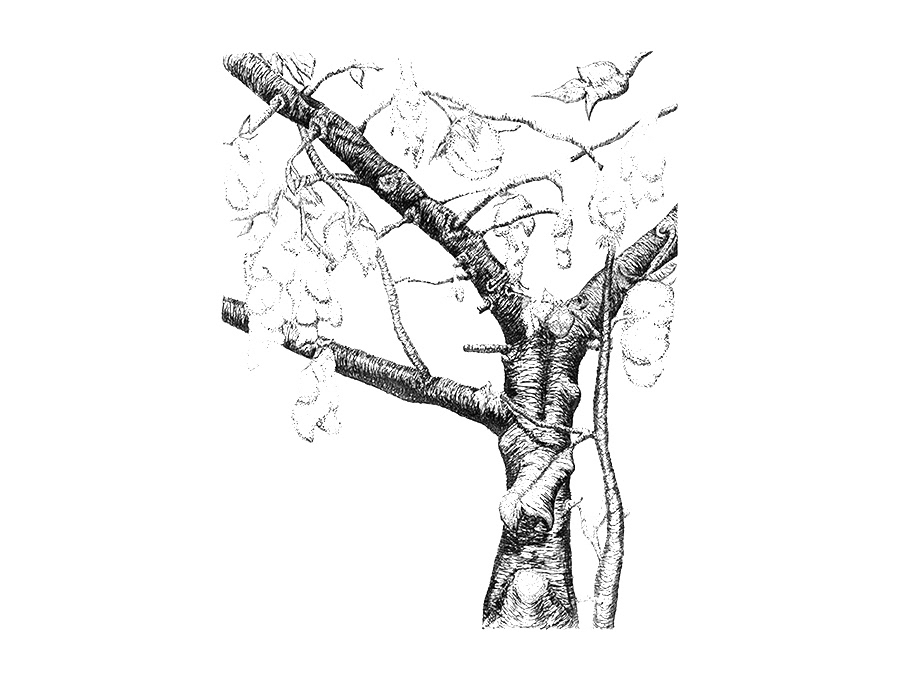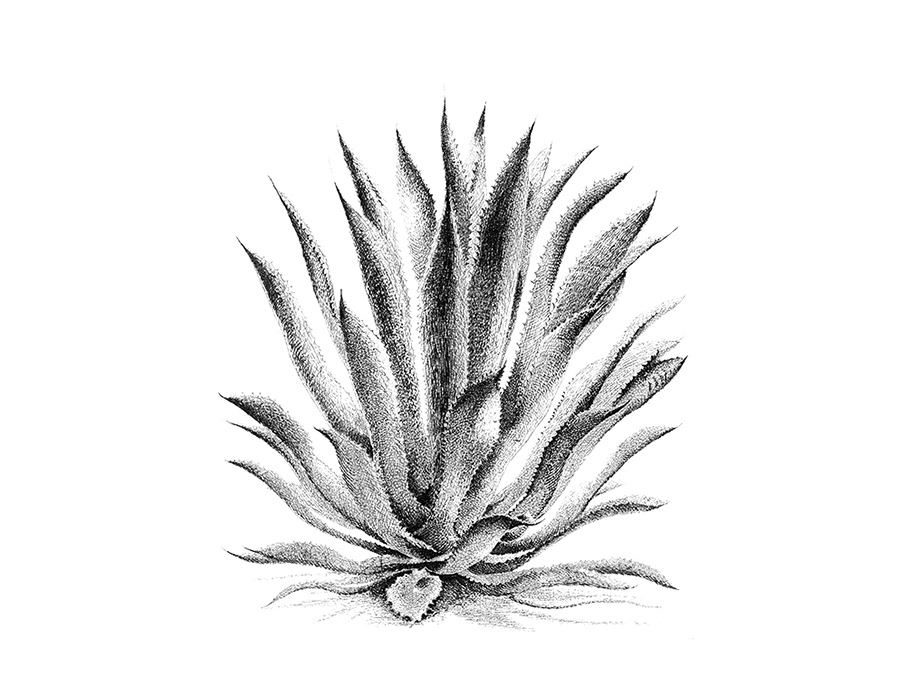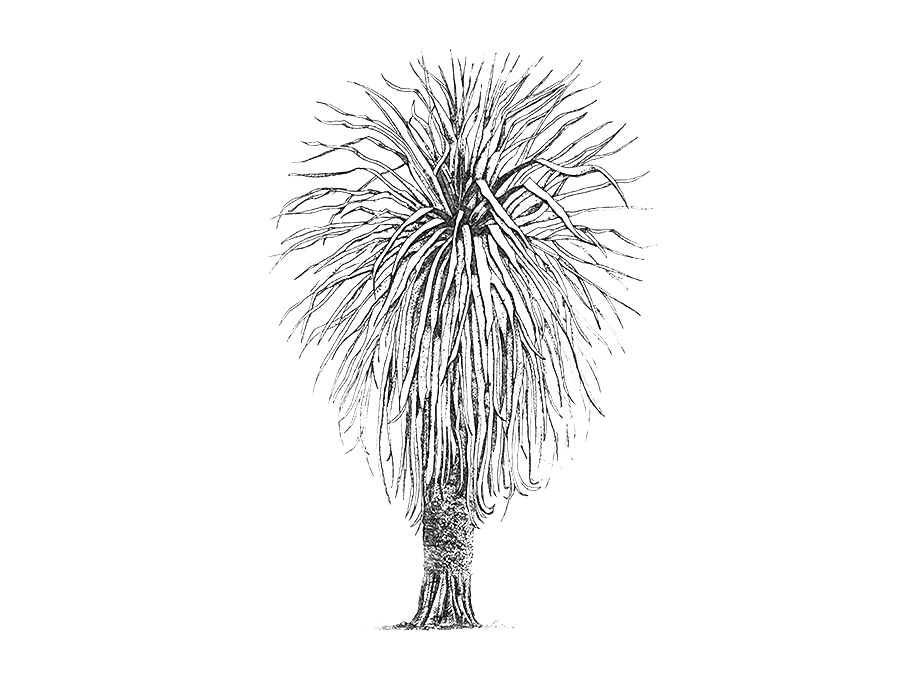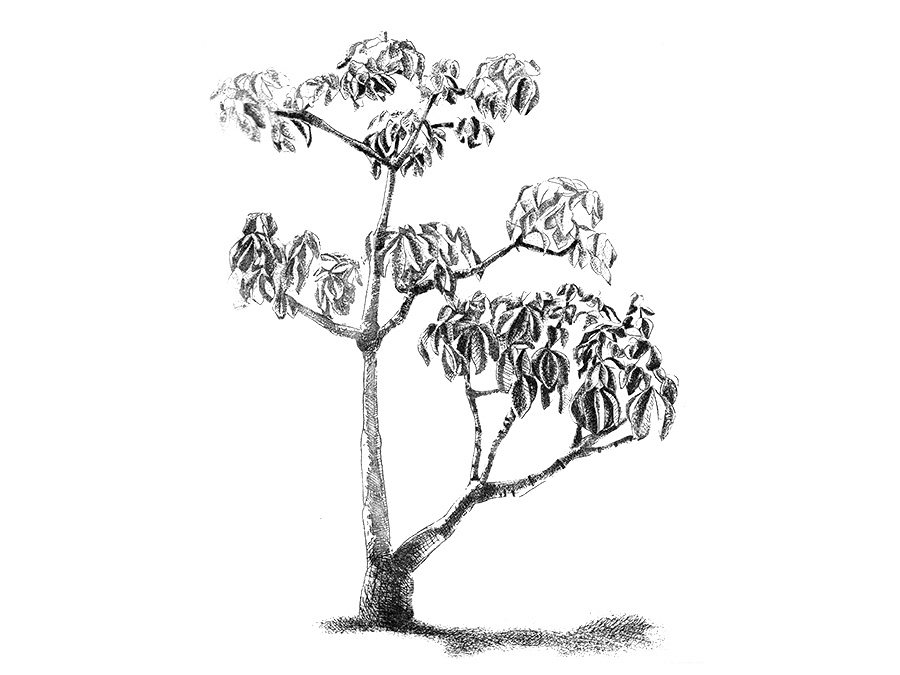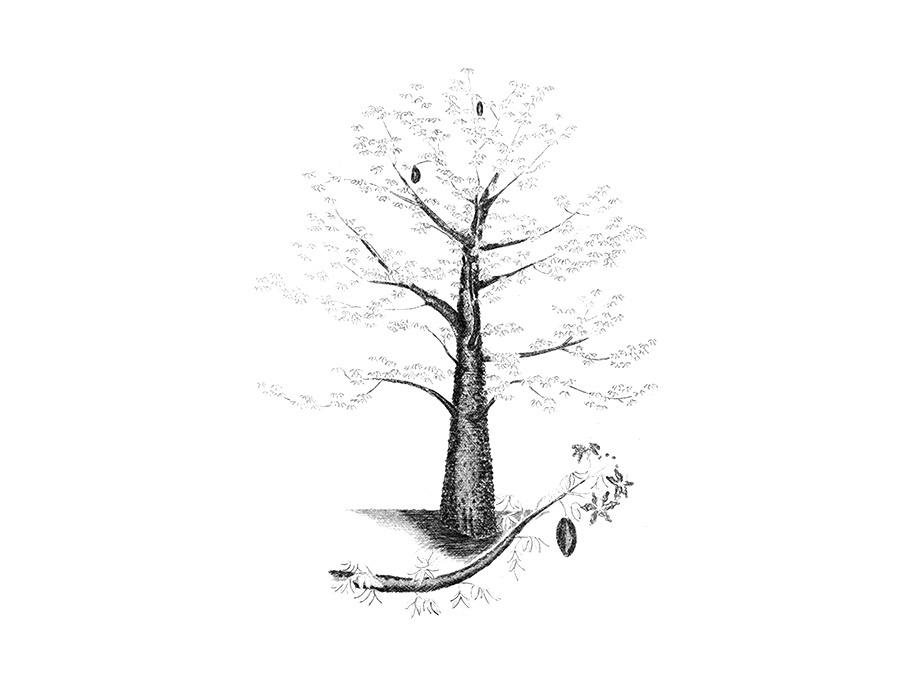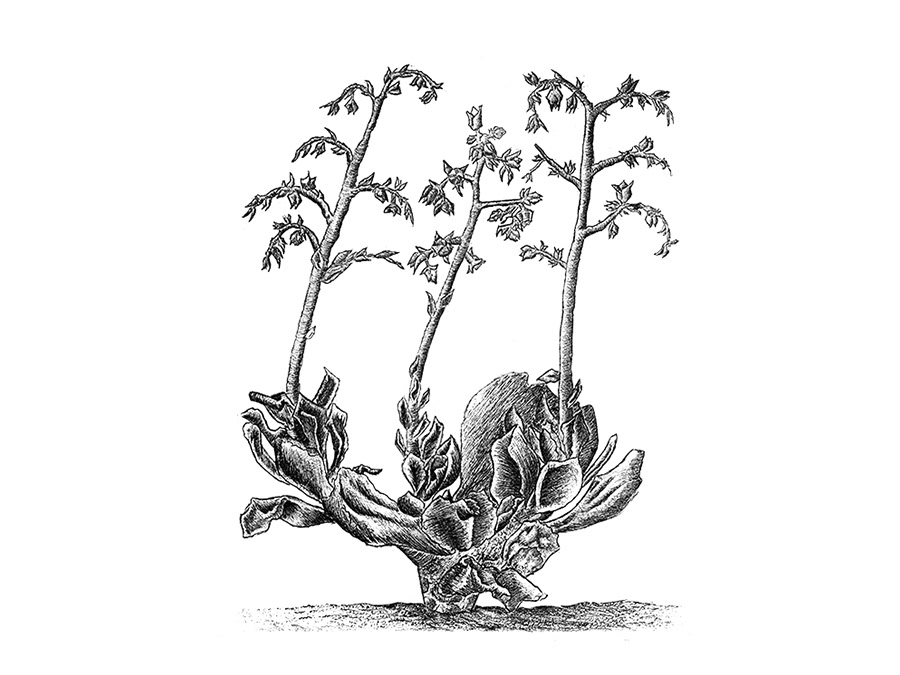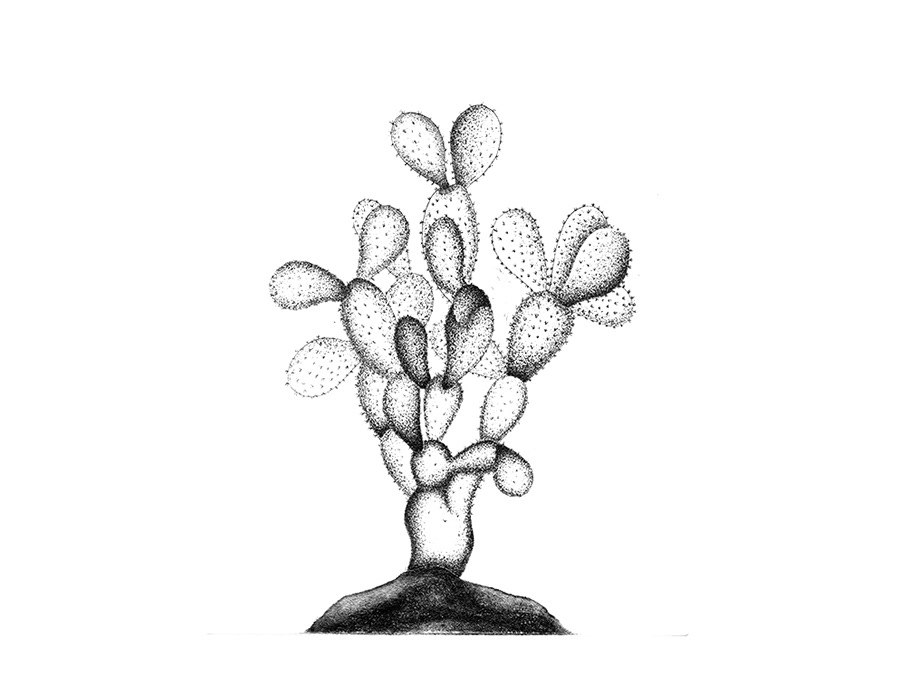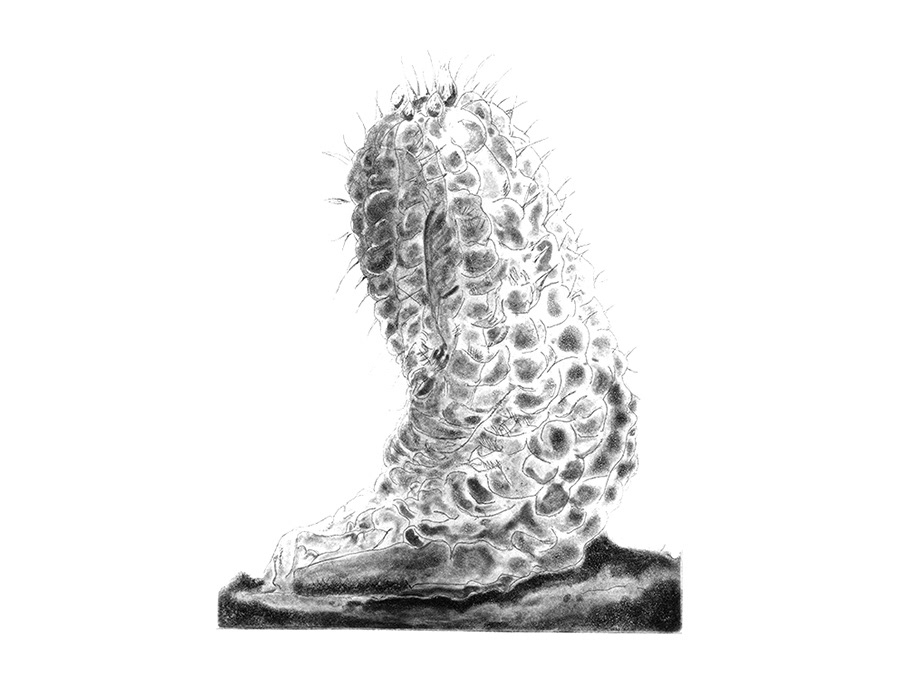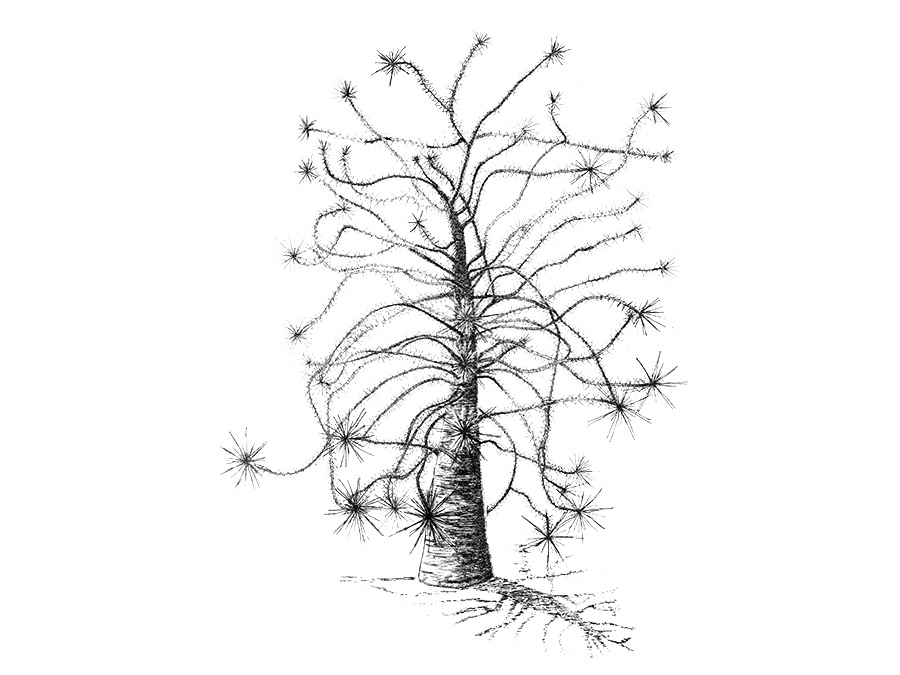Pot-bellied • Beaucarnea sp.
The illustrated specimen comes from the municipality of Tepelmeme in the northern part of the State. Plants of this genus are called 'barrigona' in other towns in Oaxaca due to their swollen trunks that store water; they are also known as 'star palm.' With their size and imposing appearance, they are one of the most remarkable elements of the flora in arid and rocky areas of central and southern Mexico. Archaeologists have found remains of Beaucarnea leaves in pre-ceramic levels of caves in the Tehuacán Valley, where they likely served for basket weaving. The Beaucarnea belongs to the nolinaceae family, which includes the sotols. Or cucharillas, and that some specialists group together with the dragon's blood (genus Dracaena) and other succulent plants from Africa and Asia. The nolinaceae are distributed from the southwest of the United States of North America to the north of Central America. Mexico accounts for 90% of the 55 species that make up the family. The Beaucarnea genus has been recorded from Tamaulipas to Nicaragua, and Oaxaca is the area with the greatest diversity: 6 out of the 9 species of the genus grow in the state, including some poorly studied populations that may possibly warrant the creation of new binomials. The plant depicted in this plate probably corresponds to Beaucarnea purpusii, a species listed in the official norm NOM-059-ECOL-2001 under category A*, designating threatened endemic plants. All the Mexican species of Beaucarnea described to date are included in the norm due to their restricted distribution, vulnerability to habitat disturbances, and demand in the illegal plant trade. Known as 'elephant's foot' in urban settings, they reach exorbitant prices in the market due to their sculptural forms. As attaining commercial sizes in a nursery is difficult due to the slow growth of these plants, adult specimens are criminally plundered from the wild. Bibliography: • García Mendoza, Abisaí, and Raquel Galván V. 1995. "Richness of the Agavaceae and Nolinaceae families in Mexico." Bulletin of the Botanical Society of Mexico, 56: 7-24. • Secretaría de Medio Ambiente y Recursos Naturales (Secretary of Environment and Natural Resources) 2002. Official Mexican Standard NOM-059-ECOL-2001. Official Gazette of the Federation, March 6, 2002, Second Section, pages 1-80. • Smith, C. Earle 1967. "Plant remains." In: Byers, Douglas S. (ed.) 1967. "The prehistory of the Tehuacán Valley." Volume 1: Environment and subsistence. University of Texas Press, Austin.

